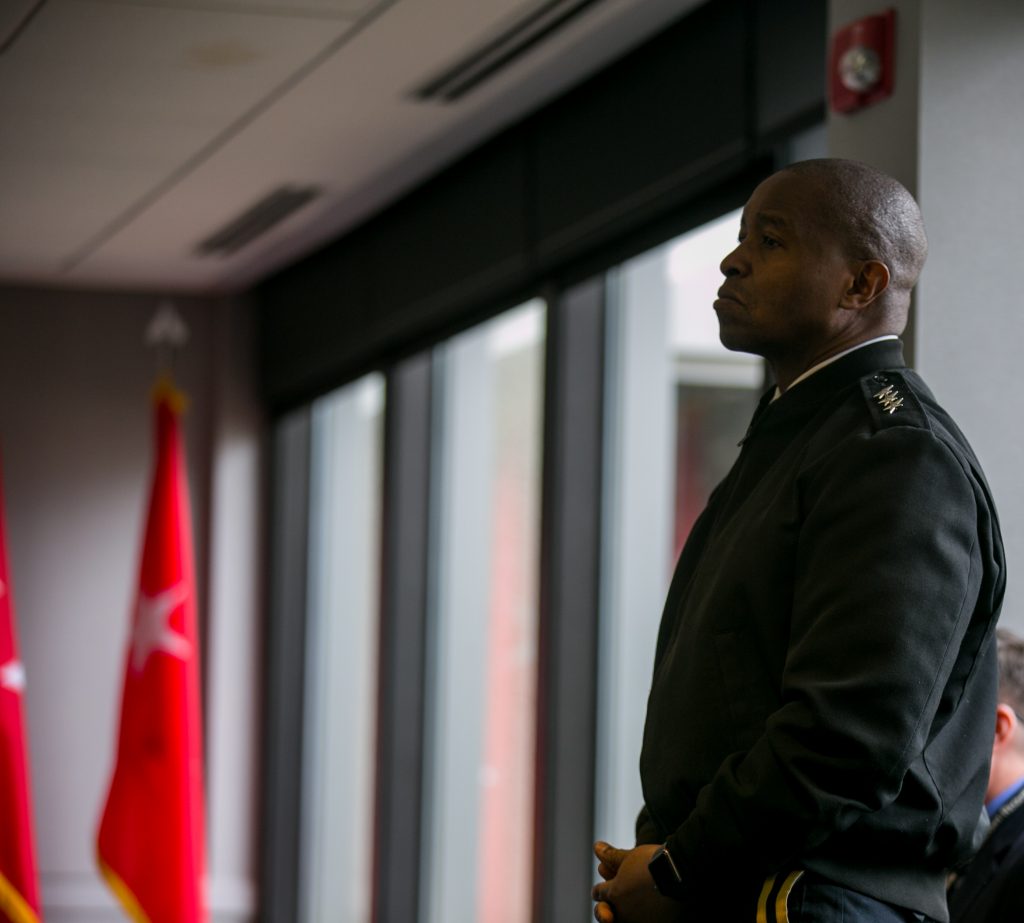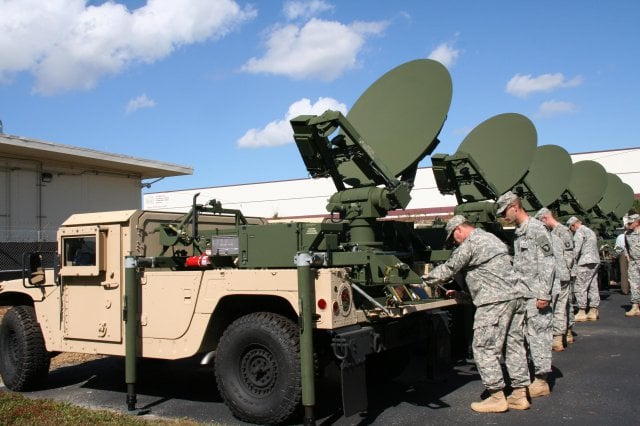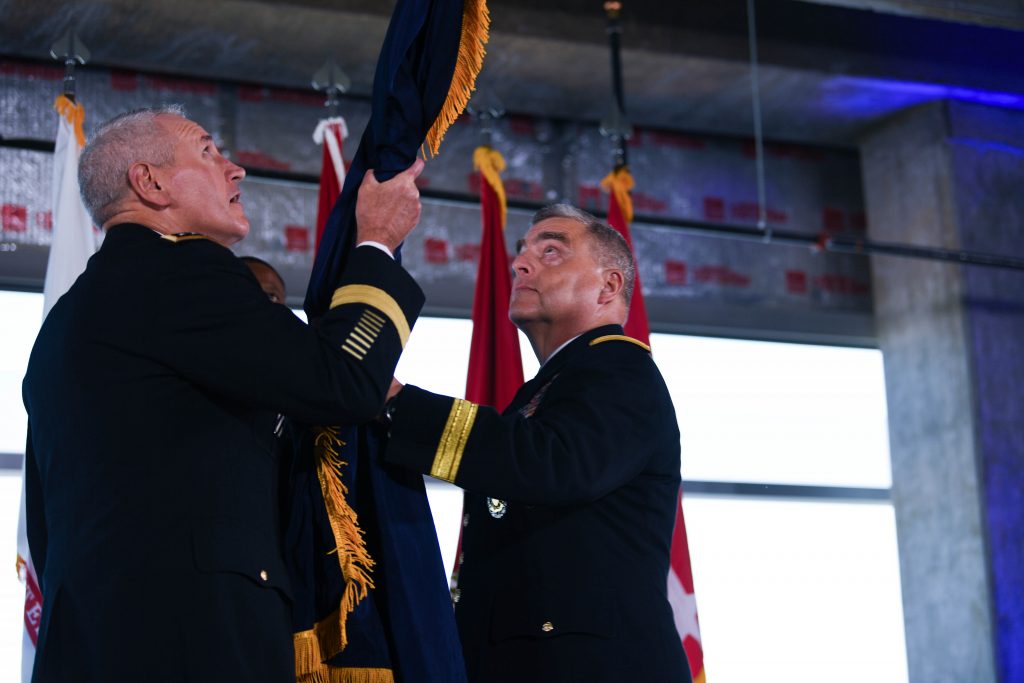SYDNEY J. FREEDBERG JR.
Lt. Gen. Bruce Crawford
 TECHNET 2019: The Army will soon award a contract for a private company to own and operate the headquarters network used by its new Futures Command, the Army CIO told me. If this pilot project for Enterprise IT As A Service works out, Lt. Gen. Bruce Crawford said, the Army will hand over the networks at more of its 288 installations to the private sector — which has proven far more adept at building, managing, and continually upgrading business IT than the government has. Outsourcing the back-office “enterprise” IT this way, Crawford continued, will allow the Army to focus its own efforts on what only it can do: build a battle-ready network for combat units that can survive a major war.
TECHNET 2019: The Army will soon award a contract for a private company to own and operate the headquarters network used by its new Futures Command, the Army CIO told me. If this pilot project for Enterprise IT As A Service works out, Lt. Gen. Bruce Crawford said, the Army will hand over the networks at more of its 288 installations to the private sector — which has proven far more adept at building, managing, and continually upgrading business IT than the government has. Outsourcing the back-office “enterprise” IT this way, Crawford continued, will allow the Army to focus its own efforts on what only it can do: build a battle-ready network for combat units that can survive a major war.
“The Army’s starting to explore as-a-service models [for bases], so we can focus our attention on our core competency… at the tactical level,” Crawford told me after addressing the AFCEA Technet Cyber conference in Baltimore. That means everything from soldiers’ handheld Android devices to the five Army-operated Regional Hub Nodes (two in the US, one each in Europe, the Mideast, and the Pacific). Unlike the enterprise IT on Army bases, these tactical systems have to function in active war zones under constant attack.
“Absolutely there are vendors that can provide the radios for us, [but] there are things associated with the tactical network that only we can do,” Crawford said. “We want to focus the energy of the Army … at the tactical level.”
Army soldiers train on SMART-T terminals for AEHF satellite communications.
Tactical vs. Enterprise
Tactical modernization is urgent. Two years ago, the Army Chief of Staff, Gen. Mark Milley, decided to truncate the Warfighter Information Network – Tactical (WIN-T), the Army’s mega-program to improve combat units’ networks. In a high-tech war with China or Russia, Milley argued, WIN-T was too easy a target for computer hacking, radio jamming, or precision missiles homing on bulky network nodes that enemy drones and direction-finding could easily detect. Last year, Milley launched the service’s biggest reorganization in 40 years, creating an Army Futures Commandto jumpstart modernization in six high-priority areas, including the network.
But the IT infrastructure on the Army’s 288 “posts, camps, and stations” continued to age faster than the standard acquisition system could replace it, let alone upgrade it to modern standards of efficiency and security. All the Army could manage was painfully slow and piecemeal modernization, Lt. Gen. Crawford told the TechNet conference. “It’s almost a breadcrumb for everybody type of approach,” he said. “Nobody ever gets a real cookie.”
So, about five months ago, Crawford and Lt. Gen. Stephen Fogarty, chief of Army Cyber Command, began exploring the idea that became Enterprise IT As A Service. Instead of the Army trying to build, own, and operate on-base networks itself, it would effectively rent IT from private companies. Those contractors would be responsible not only for providing the hardware and software, but also for keeping it up to date with regular upgrades and quick patches to cyber vulnerabilities — the kind of quick, responsive change that the military procurement system has long struggled with.
This is a new approach for the Army, but the Air Force has been exploring it for two years, Crawford said, and the Navy embraced it almost 20 years ago with what it then called the Navy-Marine Corps Intranet. (That said, the Navy also ultimately moved away from a contractor-owned, contractor-operated model and moved to a government-owned, contractor-operated NGEN contract in 2014).
“It’s not a new concept,” Crawford told me. “I can tell you the No. 1 partners that the Army has had are the Air Force and the Navy, sharing their lessons-learned… We’ve learned a lot.”
The head of Army Futures Command, Gen. John “Mike” Murray (left), and Army Chief of Staff Gen. Mark Milley (right), formally unfolded the new command’s colors in Austin in August 2018.
Start Small, Move Fast
One crucial lesson: Since its big-bang modernization programs tend to go badly wrong, the Army decided to roll out Enterprise IT As A Service on a small scale at first, with pilot projects at selected installations. The first one, fittingly enough, is the new Austin headquarters of Army Futures Command — a blank slate with no existing infrastructure or aging hardware to replace.
The pilot has moved out quickly, Crawford told me with evident pride. “Sydney, you and I talked back at AUSA” in March about the initial roll-out of the idea, he noted. Since then, he said, the Army has issued a Request For Proposals (RFP) for the Army Futures Command contract, held it open to all comers for a month-and-a-half, and closed it. Now the service is looking over the proposals it’s received from contractors and moving rapidly towards a decision.
So, I asked, do you know when the Army will announce the award? “I don’t,” Crawford said frankly, “[but] if we were able [to] brief you that it’s going to happen, put an RFP on the street, and then close that RFP, all in a span of about 90 days, the point is we’re on a pretty rapid pace, given the importance of Army Futures Command.”
If the Futures Command pilot works, the Army could try another two pilots this year and several more in 2020.


No comments:
Post a Comment